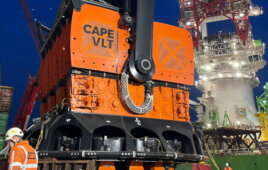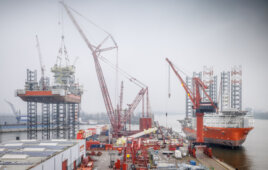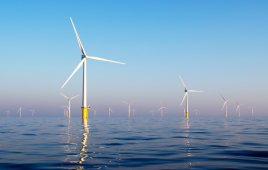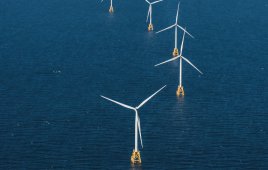 Guilliam Dupont/Application Engineer, Meteodyn/Philadelphia/meteodyn.com
Guilliam Dupont/Application Engineer, Meteodyn/Philadelphia/meteodyn.com
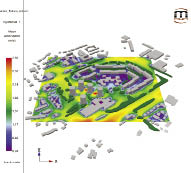
UrbaWind has modeled the wind flow and direction through a campus for an unspecified elevation. Yellow and red indicate areas of highest wind speeds and hence locations worth further investigation.
Compared to rural open spaces, the geometry of urban areas is more complex and unpredictable. The wind flows generated by buildings, such as Venturi-effects created by air flow between two buildings, or edges effects, make modeling urban flows more difficult. This made it necessary to develop a non-structured solver with an adaptive mesher. The solver in UrbaWind, MIGAL-UNS, has been frequently used for some years now and is fully validated on several academic cases. It is a fast, coupled multi-grid solver which allows a complete resolution of 3D equations for fluid mechanics. Moreover, an automatic mesh generator lets the software deal with the complex situations without long and tedious adjustments, generally a common issue when using CFD codes. The software generates refinements at key areas of the domain as well as boundary conditions.
All wind characteristics such as speed, turbulence, shear, or vertical wind, can be computed at the height needed. This is critical information for calculating fatigue problems and extreme loads on a turbine.
The input data includes CAD models of buildings and vegetation. It must be pointed out that on-site wind-speed data is not required. The use of meteorological data based on, for example, information from the nearest meteorological station and corrected from effects of the local topography, can be used to obtain a statistical description by Weibull fitting of wind production and wind roses at needed points. this makes it possible to get an accurate idea of wind speed at a proposed site for a small wind system in urban or built up areas.
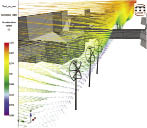
A closer look at ground level shows wind flow through a plane aligned with three proposed vertical-axis wind turbines.
Results are visualized with vectors for direction and speed. A colored wind-energy map
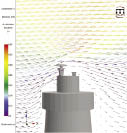
Towers and building roofs are often considered good locations for turbines. Flow images such as this one from UrbaWind shows how much higher a turbine might be mounted to take advantage of wind there.
displays the most productive locations. Moreover, the software lets users consider roughness effects (asphalt, grass, or water) and wake effects, making the software useful for finding a best location for wind turbines in an urban area.
The software also assists in selecting a best turbine for a location. It does so by calculating energy production from the distribution of wind speeds at the proposed site when users provide a power curve often available from a turbine manufacturer. Users then have to check turbulence intensities and wind pressure on the turbine to choose the most suitable and profitable machine.
The software has been validated in several relevant cases, such as for groups of buildings with complicated shapes in urban areas. Values calculated by the software were compared with measurements in wind tunnels and by anemometers in cities. A team based in Philadelphia is available to make and assist with urban wind-resource assessments. WPE
Filed Under: News, Projects

